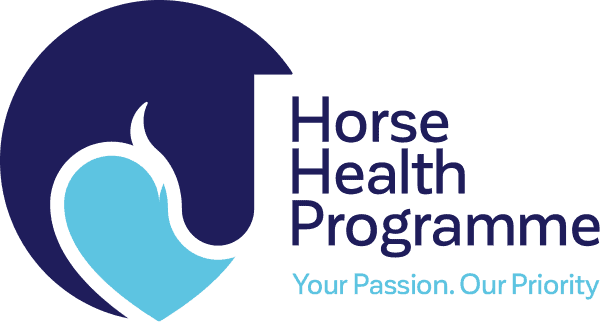Getting your horse back in shape
If your horse has had a period of rest during lockdown, or has been in lighter work, they may have lost some fitness and gained a little weight during their time off. Therefore, when bringing them back into work it is important to do so safely and with careful preparation. This will help avoid injury, not only to your horse but also yourself, and ensure that the care & welfare of your horse is considered.
Here are some handy tips on what to check and what to consider before getting back in the saddle. (Note – If your horse has been off work due to an injury, continue to follow or seek advice from your vet for their rehabilitation programme.)
Skin & coat condition
Check for minor wounds, scratches and insect bite reactions or any unusual lumps and bumps. Pay close attention to the areas which come into contact with tack.
Hooves
Hooves can become dry and brittle due to environmental and seasonal conditions and they may be longer than usual if you have not been able to have your farrier visit as often as usual.
If you have had your horse’s shoes taken off during lockdown, you may wish to speak to your farrier about getting shoes put back on before you bring them back into work. Whether your horse is shod or unshod, it is important to have regular visits from the farrier. This will help to maintain the condition of the hooves and correct balance of the foot.
If you are unsure about the soundness of your horse, speak to your vet.
Weight & Condition
Being overweight may put additional stress on your horse’s joints, tendons, muscles and heart. Workload can increase this stress so be mindful of this if your horse has put on weight during their time off.
Weigh your horse using a weigh tape and assess your horse’s body condition score. Whilst weigh tapes are not 100% accurate, they are a useful tool to monitor your horse’s weight and when combined with the body condition score, will give an indication as to whether your horse needs to lose a few pounds.
For further advice on managing your horse’s weight >
Teeth
Has your horse had their regular dental examination and rasp? Regular dental health checks (a dental check with routine rasp/float and sedation if required is included in our Horse Health Programme memberships) will ensure that your horse is comfortable and minimises the risk of dental problems and tooth loss in the longer-term. It also helps to identify problems in your horse’s mouth which may affect their performance or behaviour.
For further advice on dental care for your horse >
Tack
Your horse’s weight and muscle are likely to have changed during their time off which will affect how their saddle fits. An ill-fitting saddle can lead to rubs, sores and pain so check that your saddle still fits your horse correctly. If you are in any doubt, use a qualified saddler who can come out and check the fit for you.
Routine
Avoid making any sudden changes to your horse’s routine especially with regard to feeding & management. Introduce changes gradually as changing things suddenly can be stressful for your horse and lead to conditions such as colic and gastric ulcers.
So, you’ve checked your horse over and are excited to get back in the saddle! Your safety is really important at this point and if you are worried that your horse will be very fresh and may buck, spook or misbehave in some way, consider walking your horse in-hand at first if safe to do so. If this is not possible, you could consider lunging your horse but don’t forget that circles will add more stress and strain to your horse’s legs so move around the school and don’t lunge for too long.
Here are some things to bear in mind and look out for during and after exercise.
Take your time with increasing your horse’s fitness
Take time to slowly warm up your horse by walking for a while before increasing the pace to trot or canter. Don’t ask your horse to turn on tight circles or do intense collected work if they have been out of work or training for a while. Try to work on straight lines and larger circles.
The increase in work will put additional demand on their heart & lungs. It is vital to give them time to adapt to the new level of work, so don’t increase their workload too quickly. The gradual increase in workload will also help with the build up of muscle tone.
Increase recovery time after exercise and in between training sessions to avoid stiffness by walking and taking time to fully cool down.
Warming up and cooling down properly are essential to help muscle tone and to prevent injuries to ligaments and tendons. It can also reduce the risk of conditions such as azoturia (painful muscle cramps, also known as ‘tying up’) and colic.
Pay attention
Increased physical activity puts additional strain on your horse’s joints, ligaments and tendons. Keep a regular eye on their legs and look out for any abnormal changes. During ridden work, pay attention to your horse’s way of going and be aware of any subtle lameness or stiffness. Consult with your vet if you have any concerns.
Be aware of the ground conditions you are working your horse on. Is it slippery, deep, hard or unlevel? Ground conditions can impact on your horse’s wellbeing and will affect the way they work. For example, deep going causes more stress on tendons and ligaments compared with a firm surface.
If your horse’s behaviour is unusual, it may be a sign that your horse is in pain or discomfort. Some changes may be obvious such as bucking or rearing, although some may be more subtle such as tilting their head or clamping their tail and not wanting to go forward. Discuss any concerns that you have with your vet.
Finally, after you have ridden, don’t forget to brush or wash off dirt and sweat, check for saddle/girth/bit rubs and check legs for heat and swelling.
Signs of increasing fitness
As your horse gets fitter, you should notice:
- The ability to cope with exercise & able to maintain a regular pace in any gait
- A change in body shape
- Less sweating during exercise
- A quicker recovery time.
By bringing your horse back into work steadily and regularly paying attention to their health and well-being you will help to keep both yourself and your horse safe and minimise the chance of injury and illness.





